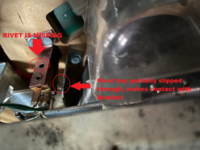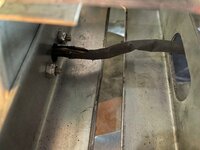Hey Team,
I'm getting a bit frustrated with my CV switch matrix and I am hoping someone smarter than I has run into a similar issue:
Symptoms:
Game boots up OK.
I get an error message that reads: check fuses F101 and F109, J127 and opto 12V Supply.
-All of the cabinet switches work just fine.
-I can go into the diagnostic menu and switch edges test. Some switches test fine. Other cause the row to ground fault (rows 5, 6 & 1 mostly). Sometimes switches seem to randomly come on and off, or pulse on and off. This can happen with the machine turned on and no one touching it.
- Swapped out the socketed U20 chip, thinking that could be it. It changed things a bit, got rid of one row fault (row 2 used to always be all switches closed), even with J-206 to J-209 disconnected. Now just switch 24 (always closed) is closed at the start of the switch matrix test...But I feel like I am close.
-Also, the ball trough is non responsive. Weird.
-I have metered out 12.07V at the 12V test point on the board. On the playfield opto board, this is up to 12.7V. I think this is normal.
Here's what really bugs me. This is a new Rottendog CPU board. The old CPU board was pooched, This one worked great for a month and then this happened.
I'm guessing U18 & U19 on the board next, but I don't want to butcher a new board if that is not actually the issue.
I feel like something shorted out the Matrix before and might do it again, even if I get it repaired.
Also, I've noted a lot of heat distortion on the big diodes on the Power board (I think these replaced the old rectifiers). I don't think this is related, since I can meter out 12V, but not certain.
I appreciate any help or guidance on this one.
I'm getting a bit frustrated with my CV switch matrix and I am hoping someone smarter than I has run into a similar issue:
Symptoms:
Game boots up OK.
I get an error message that reads: check fuses F101 and F109, J127 and opto 12V Supply.
-All of the cabinet switches work just fine.
-I can go into the diagnostic menu and switch edges test. Some switches test fine. Other cause the row to ground fault (rows 5, 6 & 1 mostly). Sometimes switches seem to randomly come on and off, or pulse on and off. This can happen with the machine turned on and no one touching it.
- Swapped out the socketed U20 chip, thinking that could be it. It changed things a bit, got rid of one row fault (row 2 used to always be all switches closed), even with J-206 to J-209 disconnected. Now just switch 24 (always closed) is closed at the start of the switch matrix test...But I feel like I am close.
-Also, the ball trough is non responsive. Weird.
-I have metered out 12.07V at the 12V test point on the board. On the playfield opto board, this is up to 12.7V. I think this is normal.
Here's what really bugs me. This is a new Rottendog CPU board. The old CPU board was pooched, This one worked great for a month and then this happened.
I'm guessing U18 & U19 on the board next, but I don't want to butcher a new board if that is not actually the issue.
I feel like something shorted out the Matrix before and might do it again, even if I get it repaired.
Also, I've noted a lot of heat distortion on the big diodes on the Power board (I think these replaced the old rectifiers). I don't think this is related, since I can meter out 12V, but not certain.
I appreciate any help or guidance on this one.


